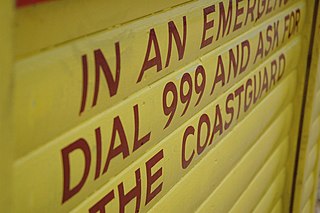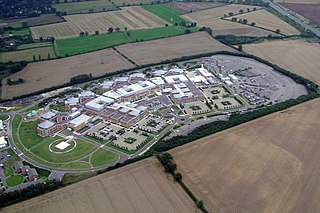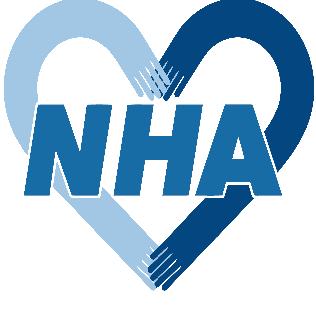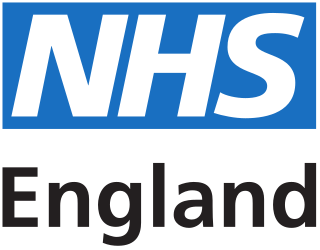BT Group plc is a British multinational telecommunications holding company headquartered in London, England. It has operations in around 180 countries and is the largest provider of fixed-line, broadband and mobile services in the UK, and also provides subscription television and IT services.

999 is an official emergency telephone number in a number of countries which allows the caller to contact emergency services for emergency assistance. Countries and territories using the number include Bahrain, Bangladesh, Botswana, Eswatini, Ghana, Guernsey, Hong Kong, the Republic of Ireland, the Isle of Man, Jersey, Kenya, Macau, Malaysia, Mauritius, Poland, Qatar, Sudan, Saudi Arabia, Singapore, Trinidad and Tobago, Seychelles, Uganda, the United Arab Emirates, the United Kingdom, and Zimbabwe.
The NHS Information Authority (NHSIA) was part of the UK National Health Service (NHS). It was established as a NHS special health authority by an Act of Parliament in April 1999. With headquarters in Birmingham, UK, its aim was to bring together four NHS IT and Information bodies to work together to deliver IT infrastructure and information solutions to the NHS in England.

NHS Digital was the trading name of the Health and Social Care Information Centre, which was the national provider of information, data and IT systems for commissioners, analysts and clinicians in health and social care in England, particularly those involved with the National Health Service of England. The organisation was an executive non-departmental public body of the Department of Health and Social Care.
Openreach Limited is a company wholly owned by BT Group plc, that maintains the telephone cables, ducts, cabinets and exchanges that connect nearly all homes and businesses in the United Kingdom to various national broadband and telephone networks. It was established in 2006 following an agreement between BT and the UK's telecoms regulator, Ofcom, to implement certain undertakings, pursuant to the Enterprise Act 2002, to ensure that rival telecom operators have equality of access to BT's local network.
NHSmail is an email, diary and directory system for National Health Service (NHS) employees in England and Scotland. The system is not for patients of the NHS. Retired NHS staff do not have access.

Emergency medical services in the United Kingdom provide emergency care to people with acute illness or injury and are predominantly provided free at the point of use by the four National Health Services (NHS) of England, Scotland, Wales, and Northern Ireland. Emergency care including ambulance and emergency department treatment is only free to UK residents and a charge may be made to those not entitled to free NHS care.
A non-geographic number is a type of telephone number that is not linked to any specific locality. Such numbers are an alternative to the traditional 'landline' numbers that are assigned geographically using a system of location-specific area codes. Non-geographic numbers are used for various reasons, from providing flexible routing of incoming phone calls to generating revenue for paid-for services.
The NHS Connecting for Health (CFH) agency was part of the UK Department of Health and was formed on 1 April 2005, having replaced the former NHS Information Authority. It was part of the Department of Health Informatics Directorate, with the role to maintain and develop the NHS national IT infrastructure. It adopted the responsibility of delivering the NHS National Programme for IT (NPfIT), an initiative by the Department of Health to move the National Health Service (NHS) in England towards a single, centrally-mandated electronic care record for patients and to connect 30,000 general practitioners to 300 hospitals, providing secure and audited access to these records by authorised health professionals.

The National Health Service (NHS) is the publicly funded healthcare system in England, and one of the four National Health Service systems in the United Kingdom. It is the second largest single-payer healthcare system in the world after the Brazilian Sistema Único de Saúde. Primarily funded by the government from general taxation, and overseen by the Department of Health and Social Care, the NHS provides healthcare to all legal English residents and residents from other regions of the UK, with most services free at the point of use for most people. The NHS also conducts research through the National Institute for Health and Care Research (NIHR).

BT Global is a division of United Kingdom telecommunications company BT Group that provides global security, cloud and networking services to multinational companies worldwide, with operations in 180 countries. It was established in July 2000 as BT Ignite.
111 is a free-to-call single non-emergency number medical helpline operating in England, Scotland and Wales. The 111 phone service has replaced the various non-geographic 0845 rate numbers and is part of each country's National Health Service: in England the service is known as NHS 111; in Scotland, NHS 24; and in Wales, NHS111 Wales.
Richard Granger is a British management consultant and former UK civil servant who was Director General for the NHS's information technology project, Connecting for Health.
The Public Services Network (PSN) is a UK government's high-performance network, which helps public sector organisations work together, reduce duplication and share resources. It unified the provision of network infrastructure across the United Kingdom public sector into an interconnected "network of networks" to increase efficiency and reduce overall public expenditure. It is now a legacy network and public sector organisations are being migrated to using services on the public internet.

The National Health Action Party (NHA) is a political party in the United Kingdom.

NHS England, officially the NHS Commissioning Board, is an executive non-departmental public body of the Department of Health and Social Care. It oversees the budget, planning, delivery and day-to-day operation of the commissioning side of the National Health Service in England as set out in the Health and Social Care Act 2012. It directly commissions NHS general practitioners, dentists, optometrists and some specialist services. The Secretary of State publishes annually a document known as the NHS mandate which specifies the objectives which the Board should seek to achieve. National Health Service Regulations are published each year to give legal force to the mandate.
Lorenzo was a controversial electronic health record platform (EHR) by DXC Technology, originally designed in the early 2010s as part of the National Programme for IT in the NHS. Lorenzo was deployed across more than 20 NHS trusts across the United Kingdom between 2010 and 2015, with most trusts progressing procurement activities to replace the system as of 2020.
The Scottish Wide Area Network (SWAN) is the secure network for Scotland’s public services. More than 6,000 sites are connected by the network.
In Practice Systems Limited (INPS) is a health informatics company, part of the Cegedim group and based in the United Kingdom.
In 2005 the National Health Service (NHS) in the United Kingdom began deployment of electronic health record systems in NHS Trusts. The goal was to have all patients with a centralized electronic health record by 2010. Lorenzo patient record systems were adopted in a number of NHS trusts. While many hospitals acquired electronic patient records systems in this process, there was no national healthcare information exchange. Ultimately, the program was dismantled after a cost to the UK taxpayer was over $24 billion, and is considered one of the most expensive healthcare IT failures.








